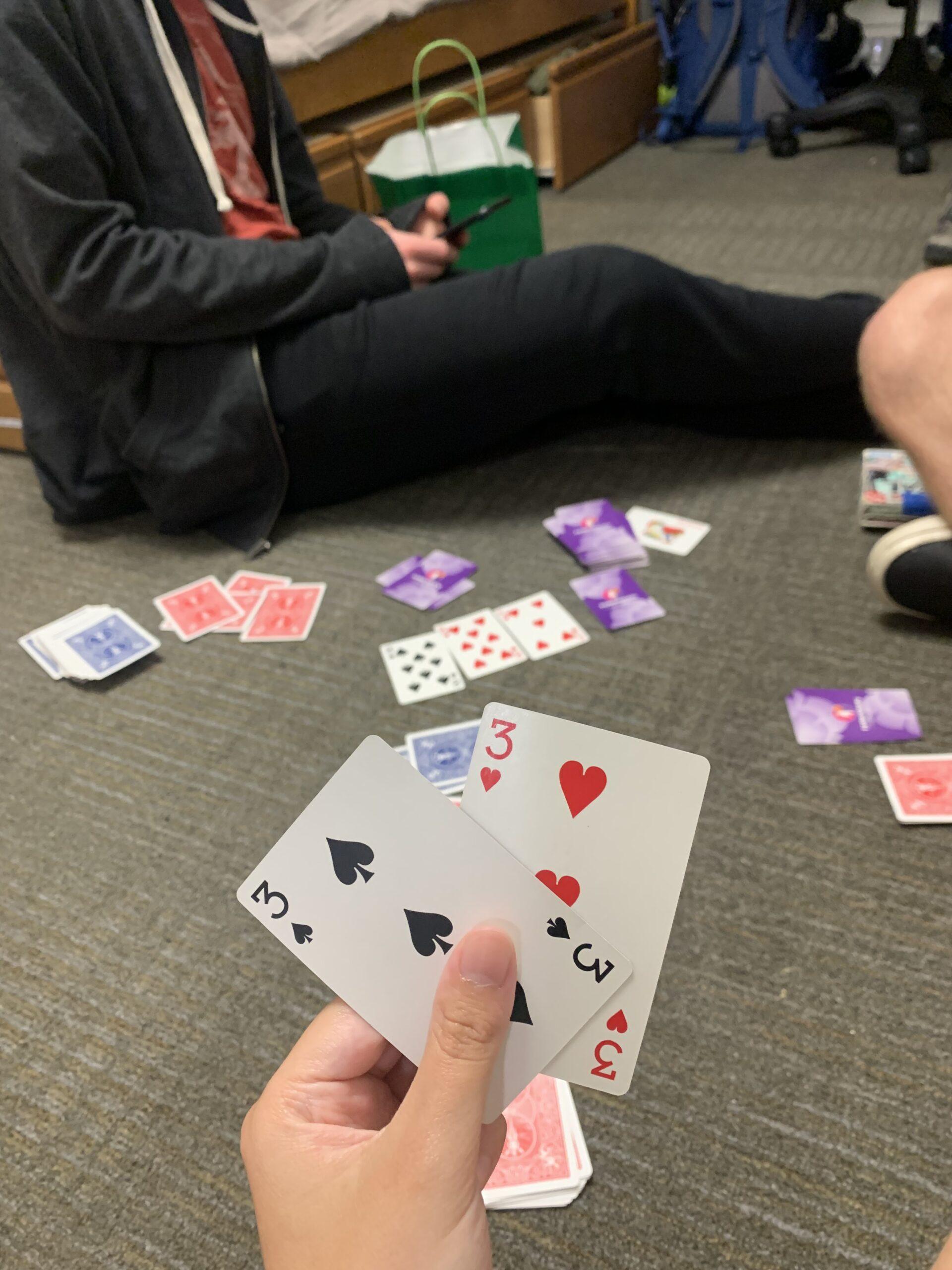Introduction to Poker
For this week’s critical play, I played the game Poker with physical cards. Poker is rumored to have been created in America as a variation based on the game Poque and is meant for adults with high inclination for risk or quick wins.

How to Play
The chance in the game of poker is based on the randomness of the two cards each player is dealt and the randomness of the subsequent randomness of the 5 cards drawn in the middle. Each set of two cards have a different probability of being dealt and the combination dealt also has differing probabilities of forming some kind of set with the 3 initial cards shown. Players must make a guess as how likely the next two cards shown will allow them to form sets and gamble their chips accordingly. The fun comes from the mechanic of being dealt randomly creating a dynamic of luck and chance that leads to the fun of challenge. Because there are so many probabilities involved, only experienced players have a good sense of what are winning cards while newer players must slowly learn how to navigate the seemingly impossible combinations of probabilities.
Gameplay
When I played Poker with my friends, I was definitely the newest player in the group. As a result, I made some silly mistakes, like folding when only one person in the group had checked and letting that person get the small and big blinds uncontested. In a group of less experienced players, I found that the majority of the challenge came more from bluffing and strategy skills rather than chance. Players that were effectively able to deceive were able to get away with more and win. However, while these players experienced quick wins in the earlier rounds, as the number of players dwindled, their bluffing skills became less important and the challenge shifted to be more based on the luck of the cards drawn. As a result, one player gained a huge stockpile of chips in the earlier rounds with the other players pointing out his good luck and how he always wins, but, through a series of bad cards, quickly lost all his chips to another player who had been more quiet throughout the game. Thus, while bluffing seemed important for deceiving less experienced players, luck became increasingly important as the number of players to deceive and the overall experience level of the group increased.
Risk of Addiction
In the earlier stages of Poker, it seemed a little harder to get addicted due to the learning curve and the huge losses newer players suffer. But as players are able to climb that learning curve, I can see how the addictive properties of chance can come into play. Similar to Herbert Mills’s expanded view in slot machines, one major factor was the “near miss” experience of having typically good cards that barely get beaten by a slightly better hand. Players with these cards will bet big and feel like they almost won, leading them to try again and again and fueling the addictive nature of the game.



